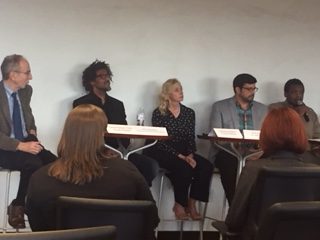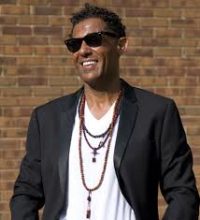Doug’s Question

I’ve been sitting in on Doug Irvin-Erickson’s classes in conflict resolution for the last year. They’ve been so good that I’ve asked Doug to write an introductory text book with me, which we’ve tentatively entitled From Conflict Resolution to Peacebuilding.
There are lots of reasons why I’ve enjoyed his classes so much that I’ve brought him on board to write the book. None is more important than a tough question he—and others—pose for those of us who are committed to nonviolent forms of conflict resolution.
How do you deal with evil?
I don’t want to get into definitional squabbles about what evil means here. Doug’s question applies whatever definition you use. So pick an example. Hitler. Stalin. ISIS. Rwanda’s genocidaires. Californians who wiped out California’s Native American population in the middle of the nineteenth century.
Like many other young Jewish men, my draft board asked me what I would have done if I had a gun and could have assassinated Hitler before he launched the Holocaust when I applied for conscientious objector status in the early 1970s. I was able to come up with an answer that was good enough to satisfy them then. But I’ve never been comfortable with it because it is hard to effectively say “no” to evil, maintain one’s commitment to nonviolence, and then heal the wounds the conflict causes later on.
 The question was driven home when Doug and I attended the launch of our friend Dan Rothbart’s new anthology, Systemic Humiliation in America. Some of the book’s authors cast strong doubts about reconciliation and other tools peacebuilders traditionally use because they don’t get at the root causes of the conflict. In particular, Dr. Tony Gaskew made that point as powerfully as I’ve ever heard it when he said:
The question was driven home when Doug and I attended the launch of our friend Dan Rothbart’s new anthology, Systemic Humiliation in America. Some of the book’s authors cast strong doubts about reconciliation and other tools peacebuilders traditionally use because they don’t get at the root causes of the conflict. In particular, Dr. Tony Gaskew made that point as powerfully as I’ve ever heard it when he said:
If you are not dismantling systems of oppression, then you are the oppressor.
Gaskew’s point took me back to the simple–but unanswerable question—Doug asks his students and my draft board (at least implicitly) asked me. If you are committed to nonviolent conflict resolution, what should a potential victim of those mass atrocities do? Frankly, much of what peacebuilders do aims to prevent a conflict or heal the wounds it causes once the fighting has been stopped but has less to say about what Johan Galtung and others have called structural violence.
I had the same reaction when listening to Arthur Romano and David Ragland discuss their research on the Truth Telling Project. The anger of the people they interviewed about police violence in the aftermath of the shooting death of Michael Brown in Ferguson MO and other killings.
A version of this discussion is already taking place among activists representing both “sides” of this discussion are trying to find common ground. In particular, we have been exploring ideas developed by Gene Sharp and others who advocate nonviolent resistance but have less to say about healing the wounds that are still raw even after a conflict has deescalated. At the same time, my peacebuilding friends also have to find ways of addressing the structural issues Dr. Gaskew properly pointed to. I’ve been lucky enough to be part of some of those discussions in which my colleagues and I have worked to see how you cannot reconcile differences in any society without addressing the inequalities that gave rise to the conflict in the first place.
We even made some progress on that front at the book launch. A visiting South African scholar/activist reminded us that those structural inequalities cannot be overcome quickly or easily if you want to maintain the fragile coalition that brought the fighting to an end in the first place. At the same time, an African-American PhD student eloquently and passionately reminded us that we will never be able to achieve reconciliation in the United States unless the inequalities in the distribution of power Whites and Blacks can exert are addressed.
Still, it is hard to find the best mix of demands for structural change with the desire to coexist given past wounds. In the 1970s and 1980s, the leaders of Solidarity in Poland talked about a self-limiting revolution in which they would stop protesting when violence seemed to be their only option and then pick up the struggle later on—as they did at the end of the 1980s. Ideas like those seem promising on paper, but seem hard to put into practice as Solidarity and others discovered once they did succeed in bringing down the communist regime but then foundered when they had to create a new one.
Hopefully, Doug will find time to at least open a discussion on these issues in the final week of classes. If not, we’ll do so in the fall, when we actually teach together and have finished a first draft of our book.
The views and opinions expressed in this article are those of the author and do not necessarily reflect the official policy or position of the Alliance for Peacebuilding or its members.
Also published on Medium.





